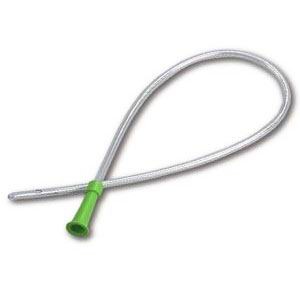F emale catheter insertion is quite a simple procedure. There are however instances when the urinary meatus is difficult to be seen. Hence, it is important to insert the catheter straight into the meatus while making sure that the catheter tip is not contaminated. Whether you are going to insert an intermittent catheter or an indwelling catheter, the procedure is similar when it comes to insertion. A health care professional can easily perform this procedure, nonetheless, it is helpful if somebody is going to assist with the insertion procedure. If you are going to do the insertion alone, you must ensure that everything is opened and ready to use.
emale catheter insertion is quite a simple procedure. There are however instances when the urinary meatus is difficult to be seen. Hence, it is important to insert the catheter straight into the meatus while making sure that the catheter tip is not contaminated. Whether you are going to insert an intermittent catheter or an indwelling catheter, the procedure is similar when it comes to insertion. A health care professional can easily perform this procedure, nonetheless, it is helpful if somebody is going to assist with the insertion procedure. If you are going to do the insertion alone, you must ensure that everything is opened and ready to use.
The catheter kit contains a sterile glove, KY jelly and povidone swabs. It will also contain a sterile towel with a hole to allow you to maintain a sterile area for the procedure.
In inserting urinary catheter on a female, you will need to perform the following steps:
1) Ask her to lie flat on her back, bend her knees and pull it apart.
2) Wear your gloves.
3) Gently move her labia apart using your non-dominant hand.
4) If you are unable to see her meatus, put your thumb for half an inch above the clitoris and gently press it in an upward or inward motion.
5) Once you are able to view the meatus, cleans it with the povidone swabs. Each of these swabs should be used once. Wipe down the sides of the meatus and the middle.
6) With your dominant hand, get the catheter and dip its tip onto the prepared KY jelly while your non-dominant hand is holding the patient’s labia apart.
7) Gently insert the catheter tip onto the meatus.
8) Try to advance the catheter until you see urine backflow.
If the catheter insertion is meant to collect a urine sample, the nurse will do so by placing the urine directly into a sterilized urine bottle. After which, the catheter will be immediately withdrawn. Nonetheless, if the procedure is done using a Foley catheter, expect that it will remain over a period of time, probably within a few days or so. The catheter will then be connected to a drain or collection bag then the nurse will inflate the bulb using sterile water to secure that it is in place.


